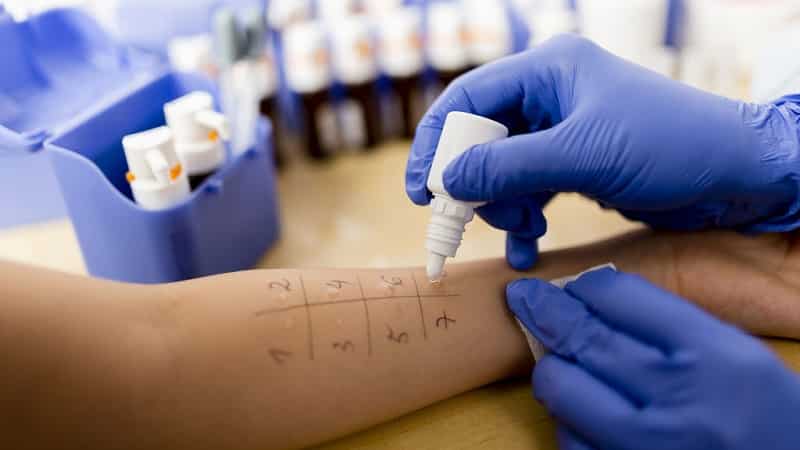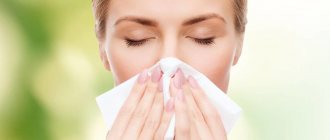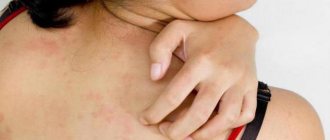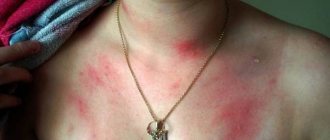Potatoes can rightfully be called one of the most popular products not only in Russia, but throughout the world. Due to its ubiquity, it even received the name “second bread”. This vegetable is present in the daily and holiday menus of most people, and the number of dishes that can be prepared with it is in the hundreds.
Many people cannot imagine their diet without potatoes, but some people cannot eat them due to allergies. How an allergy to potatoes can manifest itself and what measures need to be taken to avoid troubles, read on.
Can potatoes cause allergies?
When asked whether potatoes are an allergen, most people answer in the negative, but they are wrong. Even such a familiar and common product can cause an allergic reaction .
An allergy to this vegetable is a relatively rare phenomenon that very few people experience. But it can appear spontaneously and at any age. Recently, children under 6 years of age have been at risk.
Important! Although an allergy to potatoes is rare, it can lead to severe consequences, including anaphylactic shock.
Doctors associate allergies with a general deterioration in the nation's health and an unhealthy lifestyle, in particular, eating junk food. In children, intolerance occurs due to lack of breastfeeding.
The hereditary component should not be excluded . If the parents have allergies, the child may also be susceptible to it.
Allergies to other crops:
How does an allergy to carrots manifest itself and how is it treated?
Can an allergy to rice occur and how does it manifest itself?
ethnoscience
For lovers of traditional medicine, there are recipes for relieving allergic reactions:
- Eggshell. The shell is removed from a boiled egg, dried and crushed, then mixed with lemon juice and consumed daily.
- For allergic rhinitis, you can brew bran with boiling water and eat it on an empty stomach in the morning.
- To prevent a child’s potato allergy from becoming chronic, he is bathed in a bath with the addition of various herbs (wormwood, burdock, nettle, spruce needles, birch leaves, string, chamomile).
Why allergies occur
The causes and mechanisms of allergy to potatoes, as well as to many other products, have not yet been studied in sufficient detail. A number of substances contained in this vegetable can cause an immune system reaction .
The main allergens in potatoes are proteins . Among them, the most active are patatin, tuberin and cathepsin D.
Of the non-protein substances, potato starch poses the greatest threat . This carbohydrate brings much more trouble to allergy sufferers, since it is actively used in the food industry. There is a high risk of getting an allergic reaction by consuming a product that is not directly related to potatoes. A person with starch intolerance can get an allergic attack by eating berry jelly or tomato ketchup.
Allergies can be caused not only by eating potatoes . Sometimes rashes appear even when peeling this vegetable or from its smell. In this regard, young potatoes are the most dangerous for allergy sufferers. The starch content in it is higher than in old tubers, so the allergic reaction is much more severe.

Intolerance in babies
Infants are more susceptible to hypersensitivity than anyone else. The reason for this is the intestines of infants that are not fully formed.
Its walls are too thin, which is why they have increased permeability. The causes of infantile seizures may include complementary feeding too early, excessive consumption of potatoes, and heredity.
Mommy can also be the cause of such a reaction in the baby. Allergens are easily transmitted to the baby through breast milk.
Therefore, if you are breastfeeding, try not to eat foods that pose a potential risk to your babies. The most dangerous are:
- seafood;
- exotic vegetables/fruits;
- chocolate;
- natural/instant coffee.
The symptoms of potato intolerance in a child under one year of age are almost the same as in fully formed adults.
A reaction to potato components occurs in 26% of infants. The first symptoms begin to appear after 30 minutes. - an hour after consuming a harmful product.
Signs and symptoms of allergies
Potato intolerance can manifest itself in different ways and affects people of all ages , from infants to the elderly. Symptoms vary greatly depending on the person's age.
In infants
For the first time, symptoms of potato intolerance may appear in babies at 3-3.5 months. At this age, the allergen enters the body along with mother's milk. The fact that a baby cannot have potatoes can be determined by the following signs :
- the child is worried and capricious;
- problems with sleep appear;
- decrease (and sometimes complete loss) of appetite;
- unpleasant-smelling belching;
- gas formation;
- colic;
- stool changes (color and consistency changes).
If these symptoms occur, the mother should exclude potatoes from her menu and consult a doctor.
An even greater risk of developing allergies appears if the child is bottle-fed . Some food mixtures are made using potato starch. Eating them can cause the same symptoms. If the baby develops intolerance, it is necessary to replace the mixture used with a hypoallergenic one.
Important! When choosing hypoallergenic formulas for feeding an allergic child, preference should be given to those containing goat's milk.
The period from 4 months to a year, when complementary foods are introduced, is dangerous . Many manufacturers' baby food, especially curds and various purees, add potato starch as a thickener.
If an allergy to potatoes began in a child over 4 months of age , this product must be removed from complementary foods. There is a possibility that the reaction is not caused by an immune response to the allergen, but by a disorder of the digestive system. In such cases, you need to wait up to 11–12 months.
In children
A negative reaction to potatoes in children older than one year is expressed as follows::
- poor appetite;
- stomach ache;
- attacks of nausea and vomiting;
- diarrhea;
- itching;
- redness and peeling of the skin (especially on the cheeks), rashes and blisters;
- nasal congestion.
If a small child has developed an intolerance to potatoes, you should consult a specialist . The good news is that many children get rid of allergies after 6 years and can safely consume this vegetable.
In adults
Allergy symptoms in adults:
- skin rashes - redness, blisters, blisters;
- severe itching, especially in areas of rashes, may be accompanied by dryness and flaking of the skin;
- runny nose, swelling of the mucous membranes, sneezing;
- attacks of nausea, vomiting, stomach pain, colic, flatulence, diarrhea (sometimes with traces of mucus and blood);
- decreased or complete loss of appetite.

The most common reaction in adults is skin rashes and itching . They appear already in the first minutes after eating potatoes. Other symptoms may appear after a few hours.
Important! The reaction to different types of potatoes can vary greatly. The greatest risk of allergy occurs when consuming young potatoes and tubers that have been heavily treated with pesticides.
Editorial advice
If you want to improve the condition of your hair, you should pay special attention to the shampoos you use.
A frightening figure - 97% of shampoos from well-known brands contain substances that poison our body. The main components due to which all the troubles on the labels are designated as sodium lauryl sulfate, sodium laureth sulfate, coco sulfate. These chemicals destroy the structure of the curls, the hair becomes brittle, loses elasticity and strength, and the color fades. But the worst thing is that this nasty stuff gets into the liver, heart, lungs, accumulates in organs and can cause cancer.
This is interesting: Symptoms, causes, treatment and stages of skin cancer (+ photo)
We advise you not to use products that contain these substances. Recently, experts from our editorial team conducted an analysis of sulfate-free shampoos, where products from Mulsan Cosmetic took first place. The only manufacturer of completely natural cosmetics. All products are manufactured under strict quality control and certification systems.
We recommend visiting the official online store mulsan.ru. If you doubt the naturalness of your cosmetics, check the expiration date; it should not exceed one year of storage.
Types of allergic reaction
Potato intolerance can manifest itself in different ways.
Depending on the symptoms, doctors distinguish 4 types of reactions:
- Dermatological . It is characterized by itching (as a rule, it appears in the mouth), the appearance of a rash, and the development of atopic dermatitis. In mild allergies, ulcers with white liquid inside or red spots appear only around the lips, in severe cases they cover the entire body.
- Food . She is characterized by stomach pain, nausea, vomiting and diarrhea. This type of allergy is often confused with food poisoning.
- Respiratory . In this case, a person suffers from a cough and runny nose, which occurs due to inflammation of the mucous membranes, and shortness of breath appears.
- System . This is the rarest and most severe reaction. It can cause hypotension (a severe decrease in blood pressure), Quincke's edema (local, rapidly spreading swelling that most often affects the throat or lower part of the face) or anaphylactic shock. These phenomena are deadly and require immediate hospitalization.
Diagnosis of allergies
If you suspect you are allergic to potatoes, you should immediately remove them from the menu for 4-5 weeks. Then you need to eat some potatoes again to see if allergy symptoms appear. Skin rashes usually occur within 5-10 minutes after consumption.

Sometimes potato intolerance is seasonal when respiratory allergens (plant pollen) cross-react with food allergens and provoke an immune response. People with allergies to birch pollen need to be especially careful during the flowering period of this plant. Birch pollen can cross-react with potatoes.
An allergy may occur not to the tubers themselves, but to the spices that were used in preparing the product. Sometimes a food reaction becomes a sign not of an allergy, but of solanine or pesticide poisoning. Therefore, only a doctor can recognize the allergen and prescribe effective treatment.
Based on the results of the initial examination of the patient, the allergist gives a referral for tests to determine the allergen. There are several types of diagnostics :
- blood test for the content of eosinophils - allergic cells;
- skin tests;
- blood test for immunoglobulins;
- studying the patient's immune status.
A course of treatment is prescribed only after receiving test results . You cannot self-medicate - it can only worsen the situation.

Treatment of potato allergy
Treatment can be divided into three blocks : diet, symptom management and drug therapy.
First of all, avoid contact with the allergen . To do this, the doctor prescribes a special diet without potatoes and foods containing starch.
To relieve symptoms, blockers of histamine H1 receptors (Fenistil-gel), cromones (Intal or Cromoglycic acid) and topical glucocorticosteroids (Beclomethasone) are used.
If there is a risk of developing Quincke's edema, you need to have Prednisolone on hand in order to give the injection in a timely manner.
Important! You cannot treat children and adults with the same drugs. Many antihistamines are contraindicated in young children because the active ingredient in them can cause serious side effects.
Infants over 1 month of age who develop allergies are given Suprastin and Fenistil (in the form of drops).
Children over 1 year old are allowed Tavegil and Erius (in the form of syrup), as well as Zodak (in the form of drops). After 6 years, it is permissible to use Tavegila, Zirteca and Fexadin tablets.

For adults, the range of antihistamines is much wider . In the absence of contraindications, take drugs of the first (active substances - clemastine, chloropyramine, etc.), second (active substance - loratadine) or third generation (active substances - cetirizine, fexofenadine, desloratadine).
To treat the cause of allergies, rather than their manifestations, allergen-specific immunotherapy is used . Its goal is to normalize the functioning of the immune system and block the release of immunoglobulins. To do this, small doses of the allergen are injected into the patient's body. This treatment takes a long time (the course lasts 3-7 years) and requires discipline and patience from the patient. Only this method promotes complete recovery from allergies.
Interesting things about potatoes:
The benefits and harms of potatoes for the human body
Potatoes for weight loss: can you eat them on a diet?
Development mechanism
Allergies occur when the immune system gives an inadequate response to completely harmless substances. With various violations in the system of the body's defense mechanisms, the immune system perceives not only pathogenic microorganisms as hostile particles, but also rather harmless substances from the surrounding world. Such substances are called allergens.
As a result of the reaction, a large amount of histamine, leukotrienes and other biologically active substances are released, which, in turn, lead to the appearance of symptoms of an allergic reaction. Some antibodies are stored in the circulatory system forever in case an identical irritant enters the body.
The first contact with allergens is almost unnoticeable, but the next time they combine with IgE antibodies and begin to “fight” on the surface of mast cells, as a result of which the cell membranes are destroyed and histamine and leukotrienes are released. An allergic reaction occurs, accompanied by characteristic symptoms, including cough, runny nose, sneezing, lacrimation, swelling, difficulty breathing, rash or erythema.
Age is absolutely not important for the onset of the first allergy symptoms, but most often they appear in young children. Often, allergies lead to inflammation of the airways, which is then mistakenly treated with antibiotics.
Too frequent use of antibiotics, along with the deteriorating state of the environment from year to year, is a factor that clearly predisposes to this disease.
Allergy symptoms can be eliminated, but the predisposition to it is genetic, and therefore will not go away. However, with a rational approach to the problem, it is possible to forget about the symptoms for many years.
Allergy prevention
People with potato intolerance follow rules that prevent allergy attacks :
- Before consuming new products, study their composition in detail. Many products contain potato starch, which can cause a reaction. Such products should be avoided.
- Do not purchase boiled sausage by weight, baked goods or other confectionery products without original packaging. In this case, there is a risk of purchasing a product with added starch.
- In cafes and restaurants, inform waiters about an allergy to potatoes. It happens that the menu does not indicate the composition of dishes, and potatoes are not always included in the list of ingredients.
- When visiting, inform the hosts about your allergies. It is better to do this in advance so that you can adjust the menu.
- If you have a severe allergy, avoid peeling potatoes, especially young ones. If you have to do this, use rubber gloves, and in the case of the respiratory type, use a mask.
- Always have antihistamines and corticosteroid ointments on hand to treat skin rashes. Take all medications on trips, even short-term ones.
- If a child suffers from allergies, warn about this the adults with whom he spends a lot of time - grandparents, nannies, educators, teachers.

How to feed your baby potatoes correctly
In addition to the general principles of introducing complementary foods, it should be noted that there are specific recommendations regarding potatoes.
Peel the tubers and soak them in water. To speed up the process, you can cut it into pieces. The starch washing time is 2–3 hours. Change the water periodically. Next, the potatoes are washed and boiled until tender. Cooking time does not affect the allergenicity level of the product.

It is recommended to make mashed potatoes for babies watery. Think especially carefully about how to dilute it if your baby is prone to allergic reactions. It is not recommended to dilute the puree with the water in which the potatoes were boiled, as there is a high concentration of starch there. The safest way to make the puree consistency more liquid is to dilute it with boiling water. Maybe try diluting it with milk. True, milk loses its value at elevated temperatures, especially women's milk.
A great way to dilute the puree is to mix it with a vegetable other than tomatoes and other nightshades. This way you can increase the amount of a possible allergen - taurine. Most experienced mothers prefer to make potato and pumpkin puree. A good combination would be potatoes with zucchini, broccoli, and cauliflower. Even healthy infants should not be given puree with added meat, as this is heavy food.
Doctors' opinion
Doctors note the difficulty of differentiating potato allergy from other diseases.
A. Adaleva, allergist : “If you yourself observe an allergic reaction to potatoes (regardless of the diagnostic results), the product must be excluded from the diet. How long you have to follow the diet is a difficult question. If you have a common intolerance, it may go away over time. But if we are talking about a true allergy, then, as a rule, it persists throughout life.”
M. Shcheglova, allergist-immunologist : “People often confuse the symptoms of allergies and other diseases. With respiratory allergies, the patient may feel like he has a cold; cases of skin manifestations are also rarely associated with allergies. A person comes to the clinic and is prescribed the wrong treatment. But the primary care doctor is obliged to suspect such things. Before seeing an allergist, a person undergoes many months, and sometimes many years, of useless treatment. To distinguish allergies from other diseases, it is necessary to carry out a narrow diagnosis.”
Medicines
To ease the symptoms of an allergic reaction, it is advisable to take antihistamines by mouth. Drops suitable for infants:
- "Fenistil" - from 1 month.
- "Zyrtec" - from 6 months.
Children over 6 years of age and adults are allowed to take the following tablets:
- "Aleron."
- "Fenkarol".
- "Eden".
- "Lomilan."
The dose should be prescribed by a doctor based on the patient’s age and stage of the disease. If an acute reaction and anaphylactic shock develops, a solution of adrenaline and corticosteroids, for example, Prednisolone, should be administered intravenously. They relieve tissue swelling and inflammation.
Sorbents can cleanse the gastrointestinal tract: “Sorbex”, “Polyphepan”, “Polysorb”. You can get rid of itching and inflammation of the skin using local non-steroidal agents: Bepanten, Desitin, Fenistil gel.










